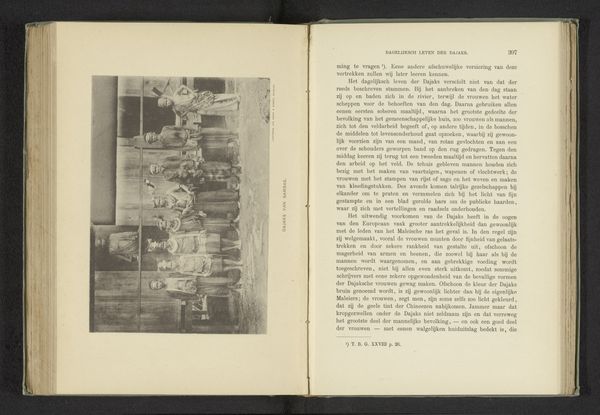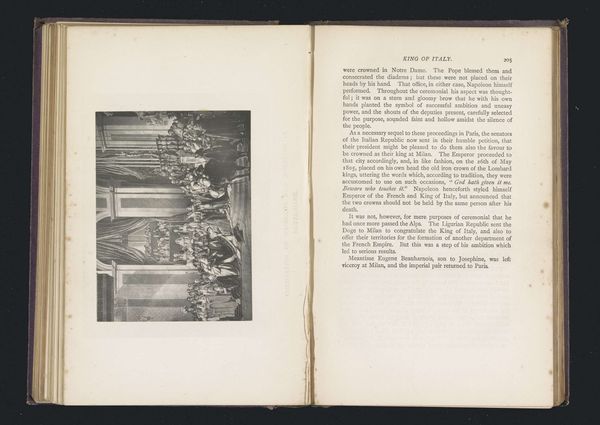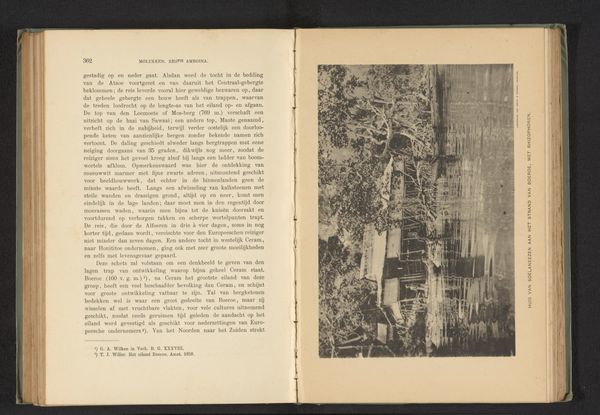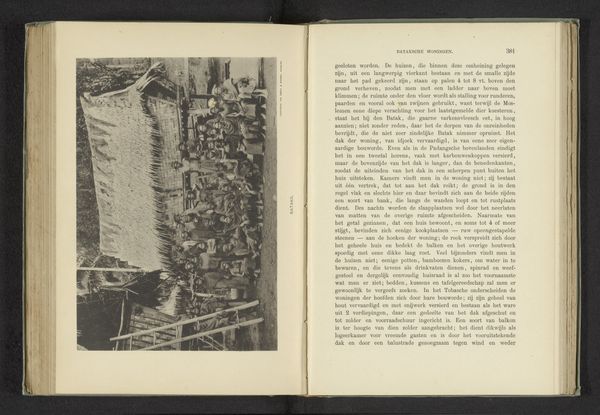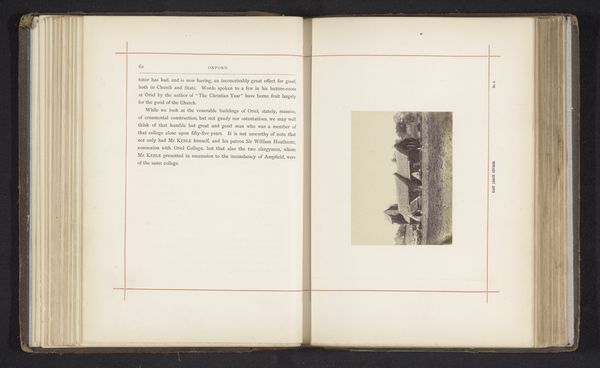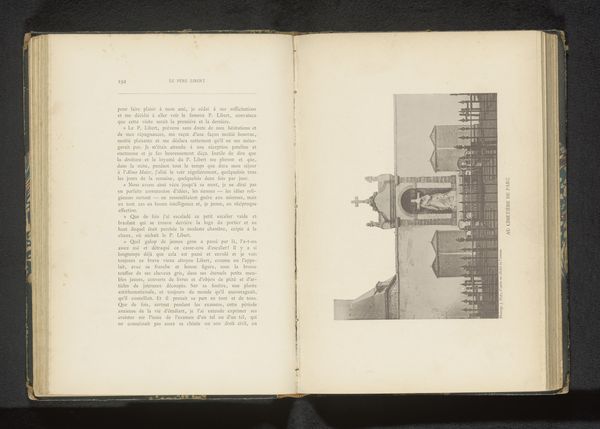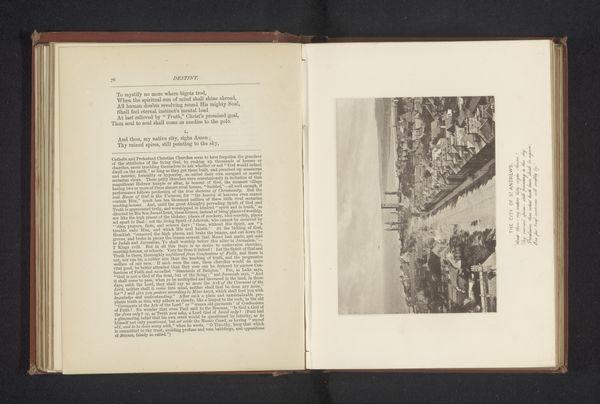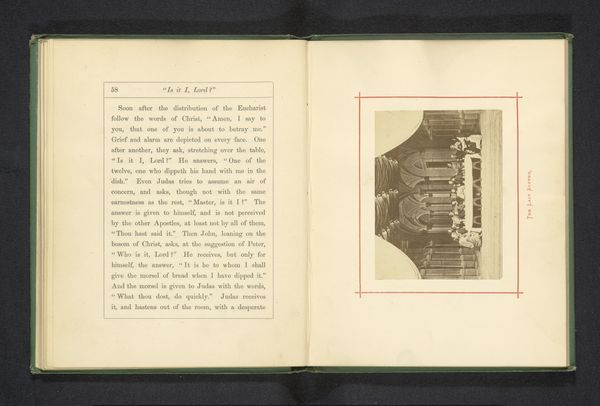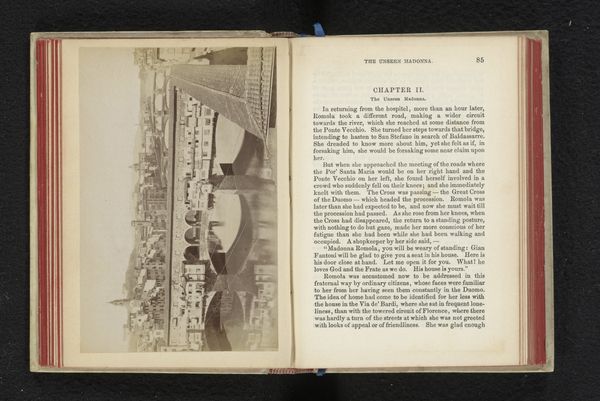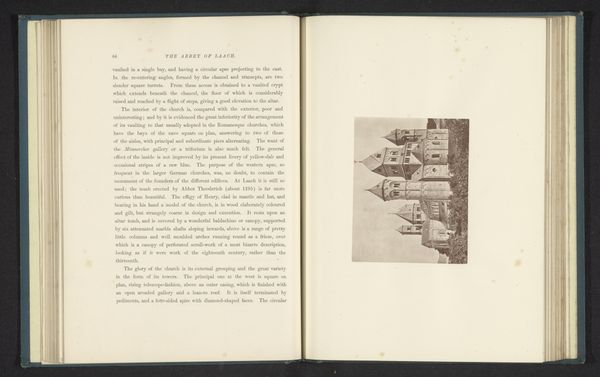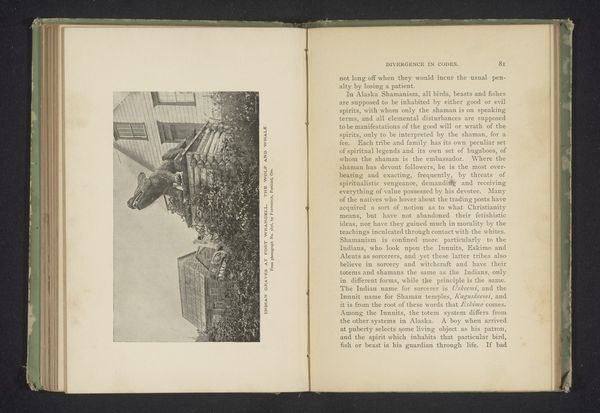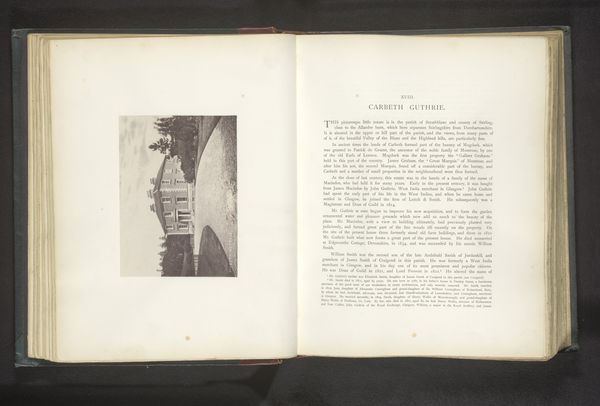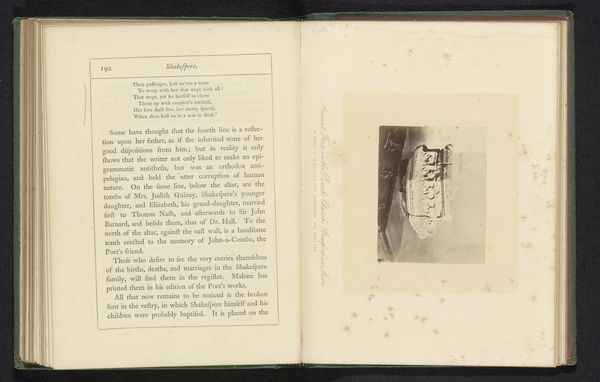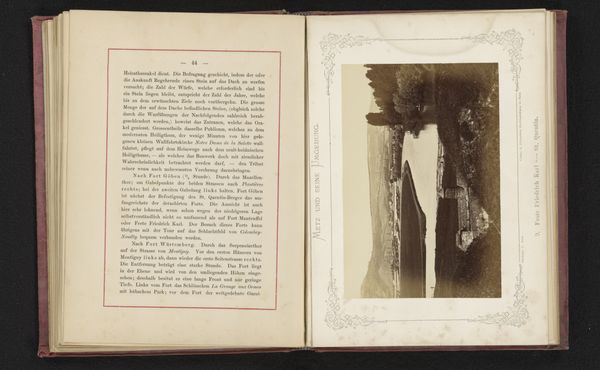
print, photography
#
still-life-photography
#
dutch-golden-age
# print
#
book
#
photography
#
orientalism
#
paper medium
Dimensions: height 113 mm, width 179 mm
Copyright: Rijks Museum: Open Domain
Curator: Here we see "Gezicht op een wajangtheater in Nederlandsch Oost-Indië," an image taken before 1894. It resides at the Rijksmuseum. What are your first thoughts on it? Editor: Initially, I'm struck by the contrast, or really the lack of it. The scene is shrouded in shadow, which makes it feel secretive, like we're catching a glimpse of something not meant for us. Curator: Indeed. The image depicts a wayang theater performance. Note the dense layering and carefully arranged elements in the shot. Compositionally, the photographer seems to have framed the edges of the book as if framing the theater itself, setting off the black and white image against the pages. Editor: Absolutely, this evokes the Orientalist tradition— a staging and framing that asserts European control over the narrative. Consider how this photograph is presented: bound within the pages of a book, an almost ethnographic capture of Indonesian culture for a Western audience. The lack of vibrant colour or direct engagement flattens a rich cultural tradition into something consumable and controllable. Curator: I see your point. But the photographer gives great attention to the form itself— look at the precise details of the shadow puppets, the intricate carvings, all rendered in remarkable clarity given the constraints of early photography and print. These elements achieve a balanced image through tonal variations. Editor: True, yet that precision also plays into Orientalist ideals of documentation and classification, stripping the cultural performance of its dynamism, and indigenous understanding. The aesthetics emphasize objectification over subjective experiences. Curator: So you feel the image reinforces power dynamics through representation. Editor: Exactly! It encapsulates how colonial powers used images to catalogue and control perceptions of the "Orient," as it was problematically called at the time. Even aesthetic choices reflect that. Curator: That's a valid perspective that shows just how much history impacts the reading of artistic pieces like this. Thank you for giving me new insight on the piece. Editor: Likewise. It’s a stark reminder how form and content are inseparable. This piece can inspire dialogues on who gets to tell whose stories, as well as the history behind those stories.
Comments
No comments
Be the first to comment and join the conversation on the ultimate creative platform.
